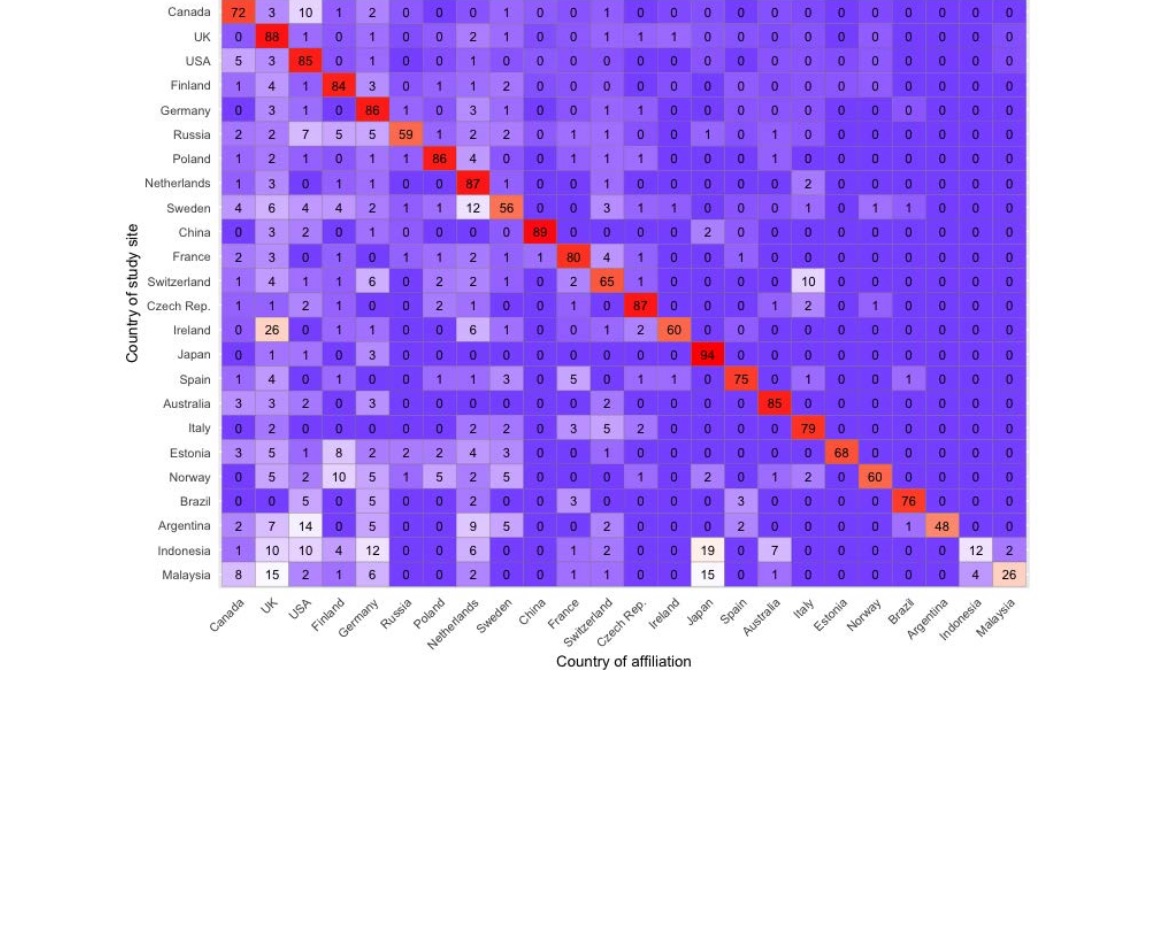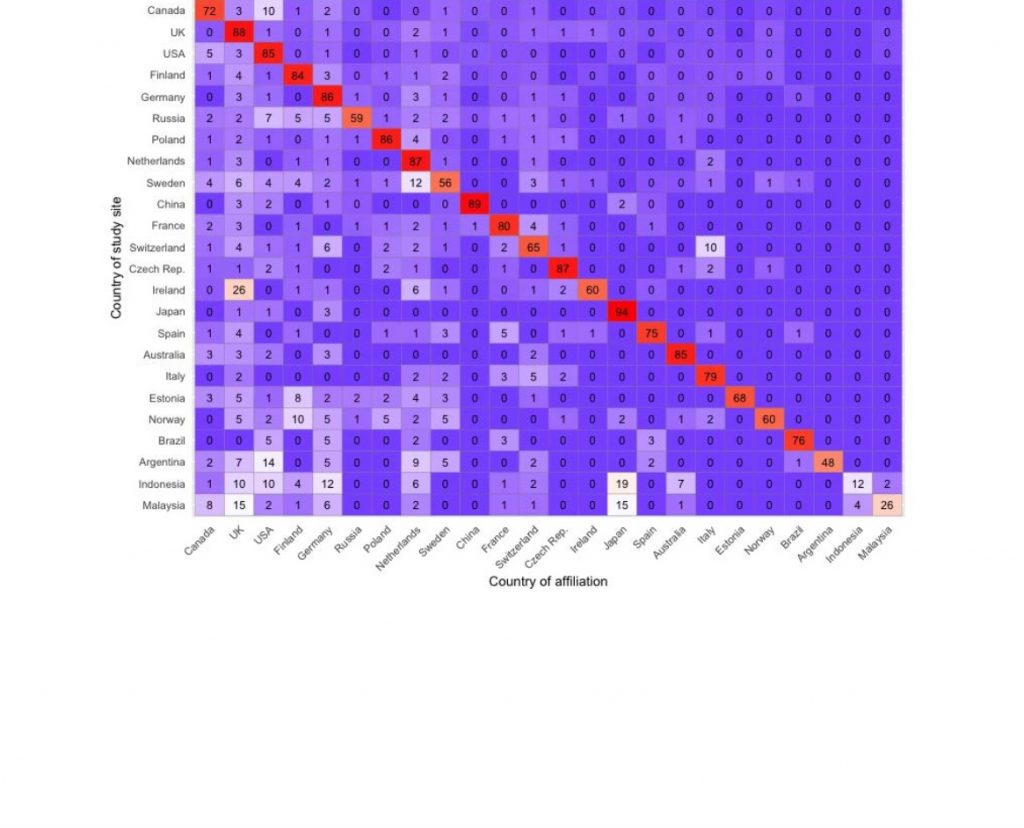A bibliometric study on peatland just been published in Mires and Peat: The ecosystem of peatland research: a bibliometric analysis by van Bellen and Larivière.
The authors looked at scientific papers on peatland published between 1991 and 2017. They found that ” become increasingly international and diversified, with more countries and study sites active, and an increase in foreign sites studied ” (bold added).
An interesting data for Indonesia is presented in Figure 8 of the paper, reproduced below which depicts proportion (%) of fieldwork performed according to the location of the study sites, relative to the total number of study sites per country. Study sites are listed vertically and countries performing research horizontally. Example of interpretation: 19 % of the articles with study sites located in Indonesia were authored by Japanese institutions.
What is more remarkable and disturbing is that only 12% of the peat research articles conducted in Indonesia were authored by Indonesian scientists. The rest 88% are #helicopterresearch .
The biggest helicopter is Japan (19%), then Germany (12%), UK (10%), USA(10%).
As noted by the authors:
“Argentina (48 %), Malaysia (26 %) and Indonesia (12 %) all had a major part of the research on their territories performed at foreign institutions. … In Malaysia, domestic researchers were responsible for 26 % of the research, with Japanese and British institutions each accounting for 15 %. The major part of research in Argentina was performed by the USA (14 %), The Netherlands (9 %) and the UK (7 %). After 2010, Indonesia, Malaysia and Argentina increased their share of research on domestic study sites, attaining 19 %, 31 % and 71 % in 2017, respectively “
We discuss the problem of Helicopter research here , peatland in Indonesia is a fertile playground for international research.
“The disastrous peat fires of recent years in Indonesia have attracted lots of international research funding. As a result, many scientific papers published have been authored by international scientists with little involvement of Indonesian scientists. We recently reviewed greenhouse gas emissions research in South East Asian peatlands. Out of 80 studies identified, only 35% of the studies were first authored by local scientists, demonstrating there is no capacity building in international-led research. It seems that years of research on peatlands produced little benefit for Indonesian scientists and communities who need practicable solutions to map their peatlands, and better water management techniques.
Wirastuti Widyatmanti from Gadjah Mada University has been involved in a committee to set a national standard for peatland mapping with the Indonesian Geospatial Information Agency (BIG, Badan Informasi Geospasial). In 2016, the Indonesian Peat Prize, funded by a foreign donor, was announced as a competition with a million-dollar prize to find a more accurate and faster way of mapping the extent and depth of Indonesia’s peatlands. Five finalists, including a winning team, all led by overseas researchers, were announced in 2018. Following that event, the committee was appointed to review the finalists’ methods so they could be used to improve an earlier peatland mapping standard. However, after a year, Dr. Widyatmanti and colleagues found it impossible to implement methods proposed by the prize’s winner and finalists. The technical procedures, mapping scale, and processes could not be clearly established. Some of the proposed methods only promoted the use of the proponent’s exclusive satellite data or required expensive instruments. The results were also questionable and contradicted the prize’s criteria of accurate, affordable, and quick to create, with a methodology that is transparent, credible, and location-agnostic (Indonesian Peat Prize, 2016). While the competition was a good idea, this top-down approach cannot be implemented successfully without a transparent and workable procedure involving local scientists and surveyors. Proposing methods that can only be used by selected international researchers does not benefit Indonesia.”
“Overall, helicopter research tends to produce academic papers that further the career of scientists from developed countries, but provide little practical outcomes for nations where the studies are conducted, nor develop the careers of their local scientists.”
Figure 8 from: Mires and Peat, Volume 26 (2020), Article 15, 30 pp., http://www.mires-and-peat.net/, ISSN 1819-754X (cc)


Leave a Reply